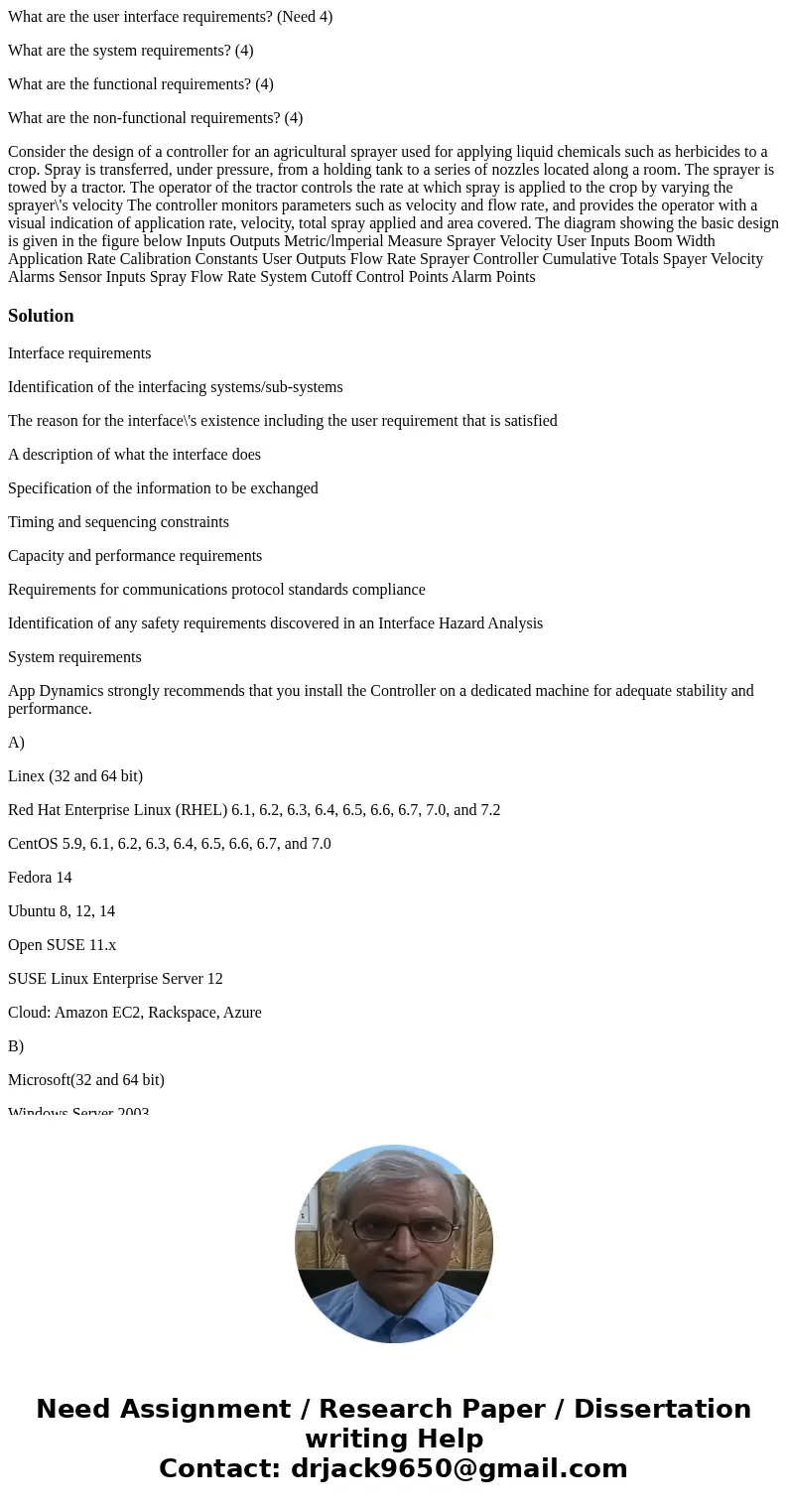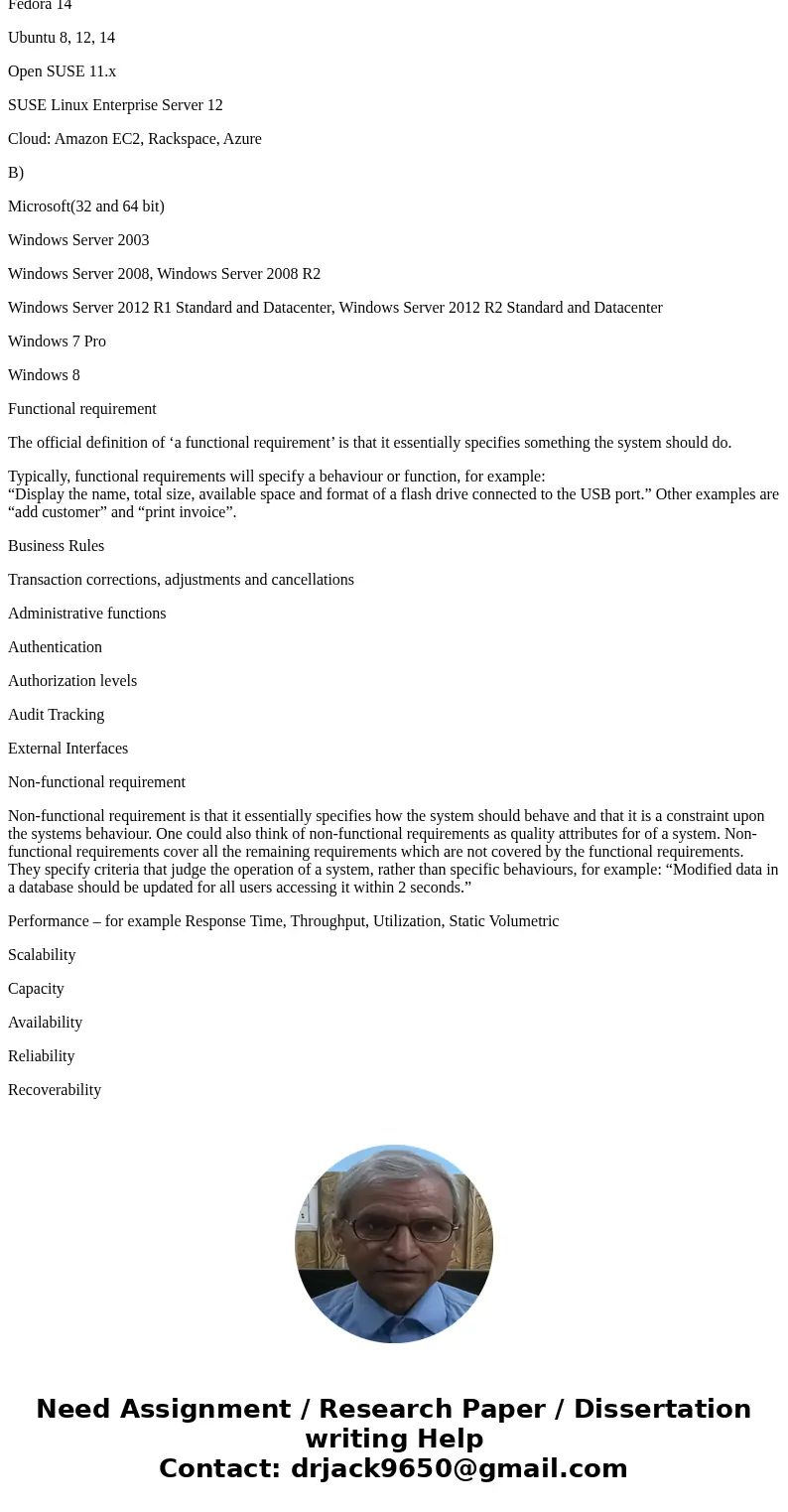What are the user interface requirements Need 4 What are the
What are the user interface requirements? (Need 4)
What are the system requirements? (4)
What are the functional requirements? (4)
What are the non-functional requirements? (4)
Consider the design of a controller for an agricultural sprayer used for applying liquid chemicals such as herbicides to a crop. Spray is transferred, under pressure, from a holding tank to a series of nozzles located along a room. The sprayer is towed by a tractor. The operator of the tractor controls the rate at which spray is applied to the crop by varying the sprayer\'s velocity The controller monitors parameters such as velocity and flow rate, and provides the operator with a visual indication of application rate, velocity, total spray applied and area covered. The diagram showing the basic design is given in the figure below Inputs Outputs Metric/lmperial Measure Sprayer Velocity User Inputs Boom Width Application Rate Calibration Constants User Outputs Flow Rate Sprayer Controller Cumulative Totals Spayer Velocity Alarms Sensor Inputs Spray Flow Rate System Cutoff Control Points Alarm PointsSolution
Interface requirements
Identification of the interfacing systems/sub-systems
The reason for the interface\'s existence including the user requirement that is satisfied
A description of what the interface does
Specification of the information to be exchanged
Timing and sequencing constraints
Capacity and performance requirements
Requirements for communications protocol standards compliance
Identification of any safety requirements discovered in an Interface Hazard Analysis
System requirements
App Dynamics strongly recommends that you install the Controller on a dedicated machine for adequate stability and performance.
A)
Linex (32 and 64 bit)
Red Hat Enterprise Linux (RHEL) 6.1, 6.2, 6.3, 6.4, 6.5, 6.6, 6.7, 7.0, and 7.2
CentOS 5.9, 6.1, 6.2, 6.3, 6.4, 6.5, 6.6, 6.7, and 7.0
Fedora 14
Ubuntu 8, 12, 14
Open SUSE 11.x
SUSE Linux Enterprise Server 12
Cloud: Amazon EC2, Rackspace, Azure
B)
Microsoft(32 and 64 bit)
Windows Server 2003
Windows Server 2008, Windows Server 2008 R2
Windows Server 2012 R1 Standard and Datacenter, Windows Server 2012 R2 Standard and Datacenter
Windows 7 Pro
Windows 8
Functional requirement
The official definition of ‘a functional requirement’ is that it essentially specifies something the system should do.
Typically, functional requirements will specify a behaviour or function, for example:
“Display the name, total size, available space and format of a flash drive connected to the USB port.” Other examples are “add customer” and “print invoice”.
Business Rules
Transaction corrections, adjustments and cancellations
Administrative functions
Authentication
Authorization levels
Audit Tracking
External Interfaces
Non-functional requirement
Non-functional requirement is that it essentially specifies how the system should behave and that it is a constraint upon the systems behaviour. One could also think of non-functional requirements as quality attributes for of a system. Non-functional requirements cover all the remaining requirements which are not covered by the functional requirements. They specify criteria that judge the operation of a system, rather than specific behaviours, for example: “Modified data in a database should be updated for all users accessing it within 2 seconds.”
Performance – for example Response Time, Throughput, Utilization, Static Volumetric
Scalability
Capacity
Availability
Reliability
Recoverability


 Homework Sourse
Homework Sourse